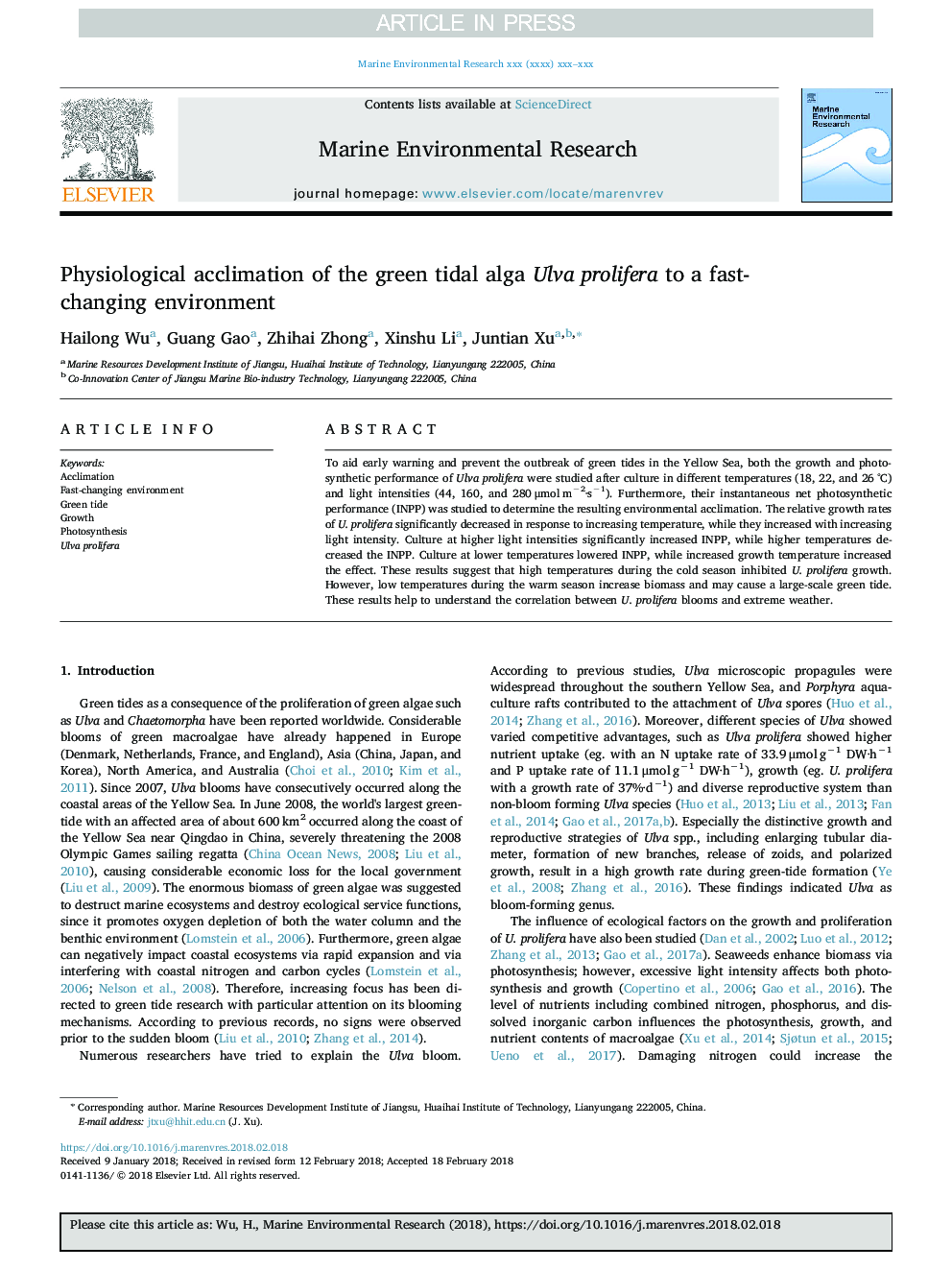| Article ID | Journal | Published Year | Pages | File Type |
|---|---|---|---|---|
| 8886289 | Marine Environmental Research | 2018 | 7 Pages |
Abstract
To aid early warning and prevent the outbreak of green tides in the Yellow Sea, both the growth and photosynthetic performance of Ulva prolifera were studied after culture in different temperatures (18, 22, and 26â¯Â°C) and light intensities (44, 160, and 280â¯Î¼molâ¯mâ2·sâ1). Furthermore, their instantaneous net photosynthetic performance (INPP) was studied to determine the resulting environmental acclimation. The relative growth rates of U. prolifera significantly decreased in response to increasing temperature, while they increased with increasing light intensity. Culture at higher light intensities significantly increased INPP, while higher temperatures decreased the INPP. Culture at lower temperatures lowered INPP, while increased growth temperature increased the effect. These results suggest that high temperatures during the cold season inhibited U. prolifera growth. However, low temperatures during the warm season increase biomass and may cause a large-scale green tide. These results help to understand the correlation between U. prolifera blooms and extreme weather.
Related Topics
Physical Sciences and Engineering
Earth and Planetary Sciences
Oceanography
Authors
Hailong Wu, Guang Gao, Zhihai Zhong, Xinshu Li, Juntian Xu,
